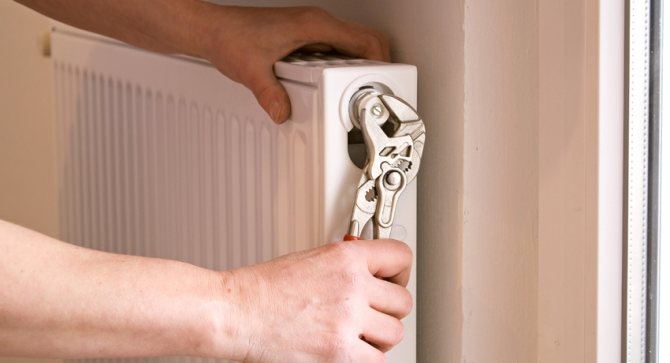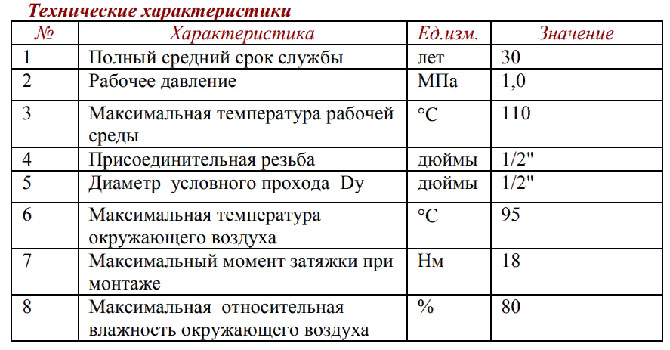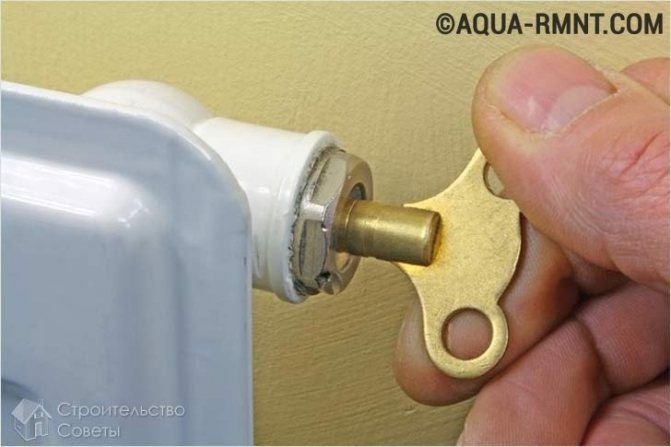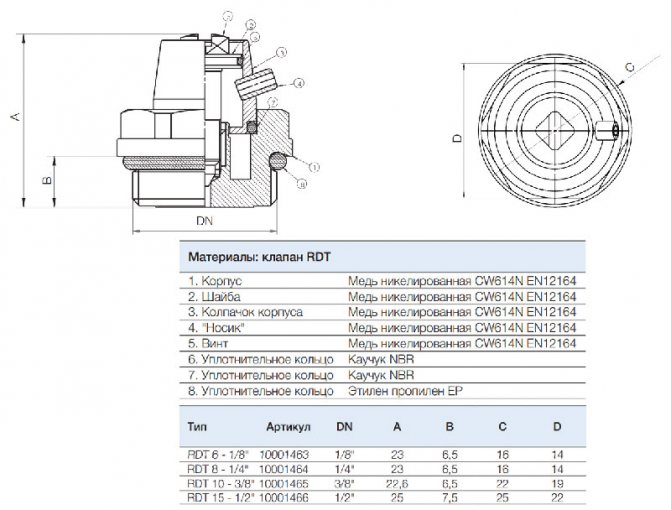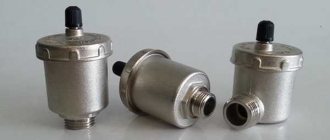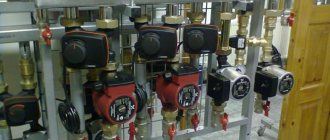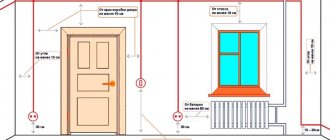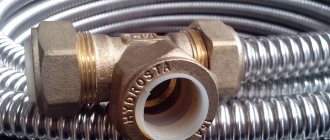Description of the Mayevsky crane
In whatever direction we consider the Mayevsky valve, it has compliance with its technological purpose and regulations within the industry standard, and is a valve for venting STD 7073V air from industrial or domestic heating systems.
The name of the Mayevsky crane is used only among the people. According to state standards, it is classified as a shut-off valve and is called a needle radiator air valve.
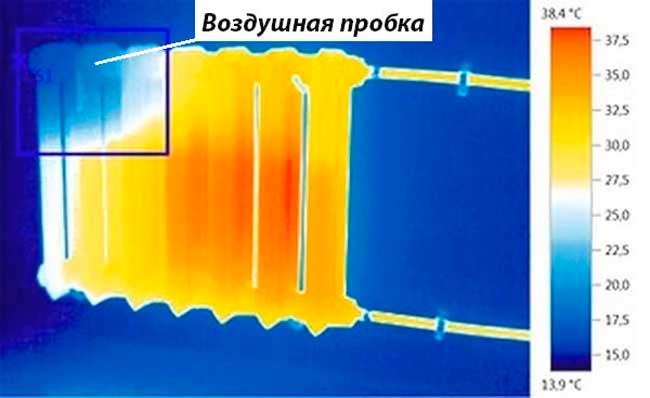
One of the most common problems that leads to malfunction of heating systems is the accumulation of air. The resulting plug prevents the fluid from circulating normally. As a result, the radiator with air inside reduces the performance of the entire system.
The coolant that circulates in the heating radiator plays the role of providing heat in the cold season. But it happens that the batteries do not warm up to the end. This can be due to the accumulation of air in the radiator and it prevents hot water from filling the entire radiator space. Therefore, this air must be somehow removed from there. It is for this that the Mayevsky crane works.
Mayevsky crane device
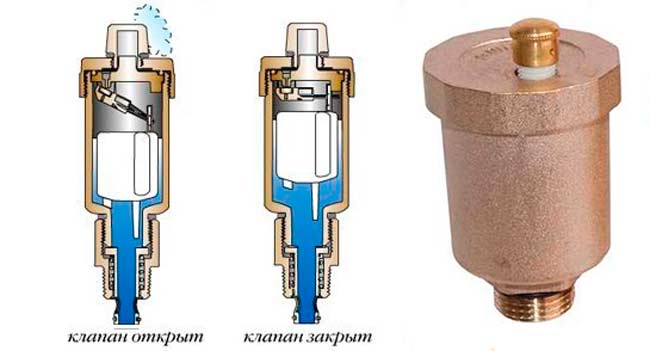

How to bleed the air from the tap? Its work is based on the principle of bleeding the air lock at the moment of loosening the check valve.
The valve of the Mayevsky valve is designed in the same way as a conventional valve, that is, the hermetic connection from a gaseous or hydraulic medium with high pressure to a medium with normal conditions opens and closes. The historical prototype of the modern design of the Mayevsky valve is an ordinary saddle-type water tap.
But when using a conventional water tap, there was an uncontrolled leakage of water from the heating system. For this, a special design of the crane was needed, which would make it difficult or completely eliminate the loss of liquid from the heating network. This problem was solved with the invention of the Mayevsky crane, which underwent a large number of improvements.
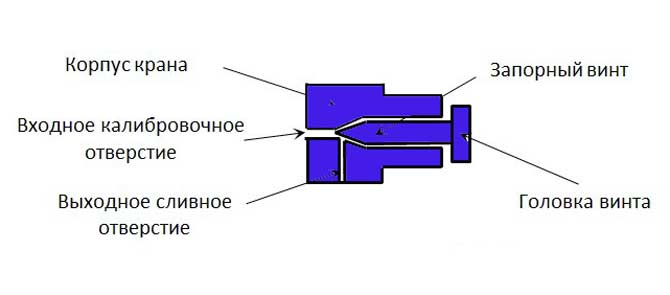

The Mayevsky crane was invented over 80 years ago. This very simple device is very effective and reliable. Therefore, it is still relevant.
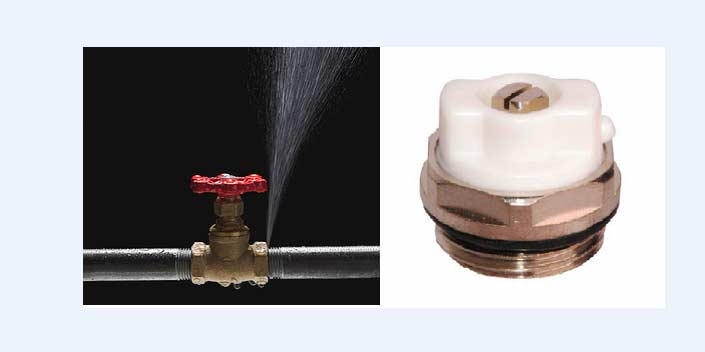

The tap is installed at the top of the heating radiators. It can be equipped with an automatic air vent or manually operated.
By opening the valve half a turn, air leaves the system and makes room for the coolant. This device is used for all types of batteries, even for old designs.
And where does the air come from in the heating system?
The appearance of air locks can be for several reasons:
- when installing heating systems;
- during repair work with the removal of fluid from the system;
- when installing a new radiator;
- in case of air leaks into the system during operation;
- as a result of a physical phenomenon (water emits air bubbles during any corrosion processes);
The latter often occurs with aluminum batteries in urban buildings.
How to use the Mayevsky valve correctly
So how do you bleed the air? It is necessary to prepare some tools, a place near the battery where the locking device is located. Remove things, food, as the water in the system is rather dirty. You need to put the bowl on the floor, under the tap.
Tools and materials when working with a Mayevsky crane:
- Water bowl;
- Rag;
- Screwdriver;
- Pin;
- Kerosene.
Use a screwdriver to unscrew the screw counterclockwise and wait until air is released from the system. If an airlock exists, then the valve must be opened a little more and wait. As soon as we open the tap, we will hear a hiss, this is how it should be - this is air coming out.
To open the Mayevsky valve, use a screwdriver
If everything is normal with the heating system, then the air leaves the system very quickly.
How can you tell if the air has already left? Very simple. As soon as water begins to flow from the Mayevsky tap, there is no more air in the system. And therefore a bowl under the tap is needed - the water in the heating system is very dirty. As soon as water has flowed, it is necessary to turn the tap in the reverse order. Sometimes it happens that Mayevsky's tap is very clogged and there is no way to open it. Cleaning the faucet is easy. It is necessary to clean the hole in the tap with a needle or pin. If Mayevsky's tap is rusted, and this happens quite often, the way out of this situation is simple - you need to drip a little kerosene onto the thread and wait 2-3 minutes, and you can already unscrew and release the air.
If Mayevsky's crane no longer fulfills its functions, then only replacing it with a new one will help. It is necessary to use an adjustable or gas wrench to dismantle the old crane. They clamp the radiator cap and unscrew the old tap. And in the same way, they install a new crane, and then you can use it again. The best time for such a replacement is summer, or when the system is under maintenance, when there is no water in the system. This can be found out at the ZhEK. And one more nuance - you should not keep the device open all the time, it, and especially the valve, quickly deteriorates.
The device and operation of the Mayevsky crane
The Mayevsky crane is made using a brass alloy that is resistant to corrosion formations. Presented as a body with an internal cone needle valve. Due to the tapered shape of the end part of the screw, a tight fit into the through hole occurs. The hole diameter can be from one and a half to two millimeters.
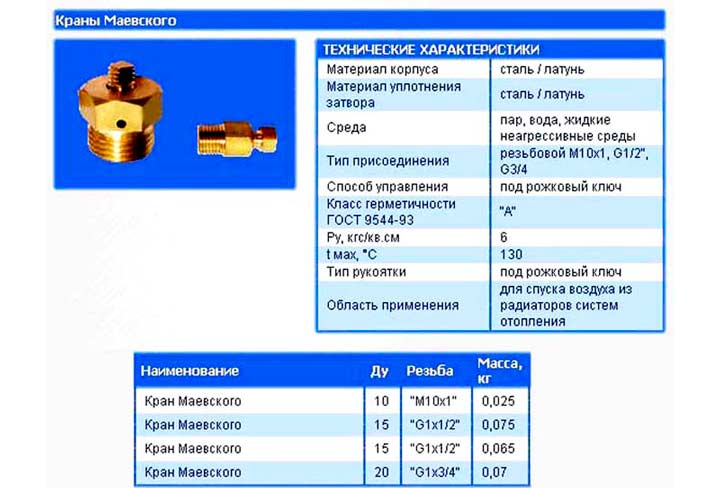

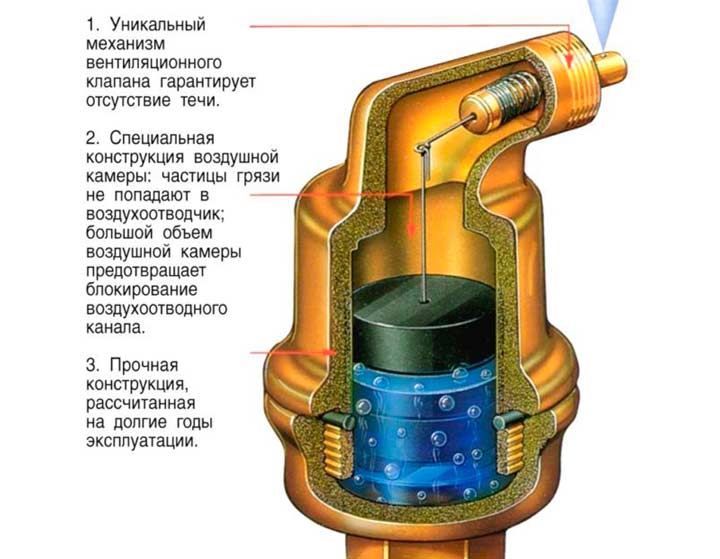

This valve is externally adjustable with a plug screw. The closed valve retains the internal heat carrier quite reliably. Outside, the screw is represented by a hex or square head for a special key and a thread for a screwdriver. Longitudinal grooves are made on the screw body for the passage of air during valve opening. In this case, the air leaving the grooves is in the chamber, which is tightly closed with a cuff and has an exit hole of the same diameter as the through hole. Since the valve is mounted with a threaded connection with a gland gasket, and a closed valve hermetically closes the through hole, then when the heating system is operating, this valve provides the system with tightness. By turning the screw, a plug opens, releasing air from the radiator cavity.
The metal body of the Mayevsky crane is trimmed from above with a plastic casing, which makes the crane modern.
Crane devices can be of various modifications, but the principle of operation is always the same.
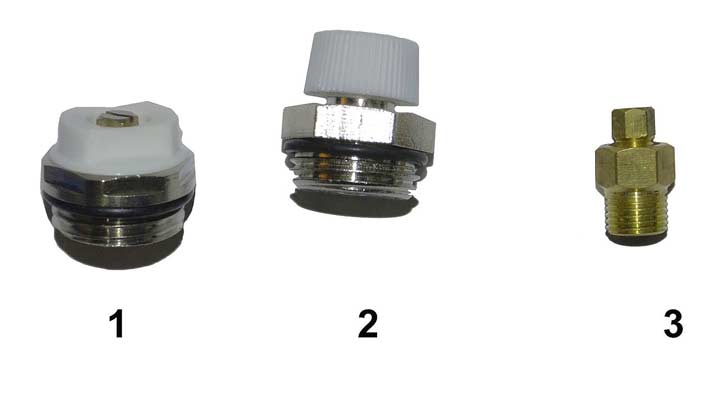

The diameter of the thread on the outside is different and therefore it is possible to select a suitable tap for any battery. The faucet can be with a thread size of 1 ", three quarters, one second".Also, the Mayevsky Crane Du 15, 20 and 25 mm is used not only in radiators, but also in various nodes of the heating system.
On a note: Du - nominal bore diameter.
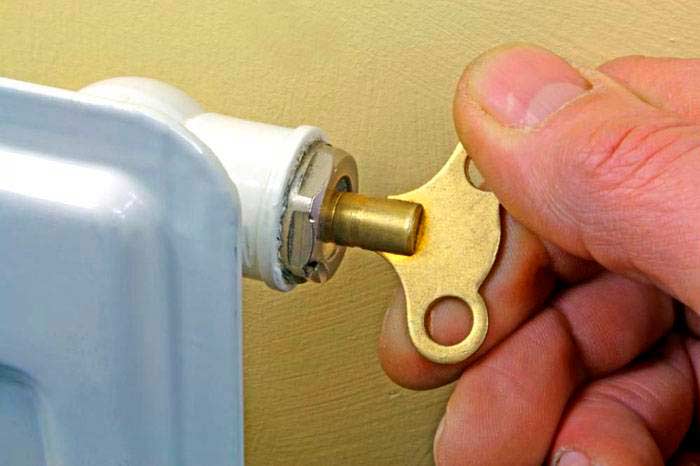

The adjusting screw is operated with a special tap wrench or a conventional screwdriver. The tap wrench is four-sided, very compact, and it is convenient for them to work even if the radiator is located in a place with difficult access.
The crane, in some cases, can be adjusted without a special tool.
The valve is turned by hand, which allows air to be vented.
Varieties
The air separation of the Mayevsky crane is of three types, which differ in the principle of operation and structure:
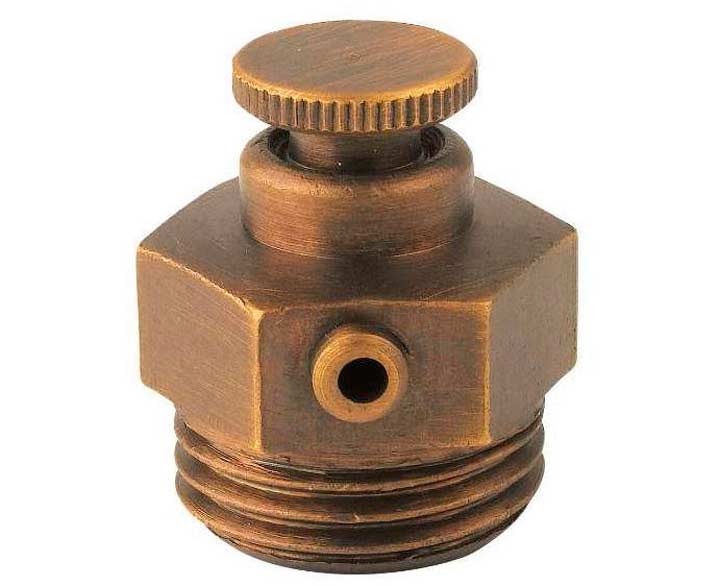

- Manual crane... It is a simple hand-operated device. If the battery does not evenly warm up, the tap is opened with a key or screwdriver, and after the air leaves the radiator, I wrap it back.
... There are differences in design and principle of operation from manual ones. Mayevsky's automatic valve is brass in the form of a cylinder, but a needle valve is not provided here. Instead, a plastic float is used. The principle of operation here is that the float moves in the presence of air through the system and opens or closes the valve. Human intervention is not required here.
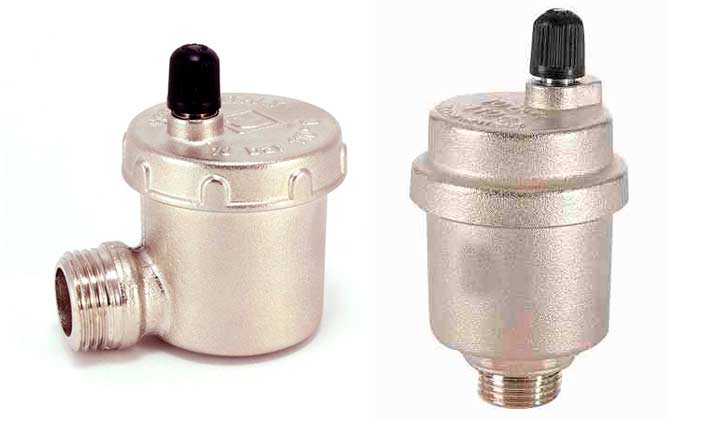
Automatic faucet
Such a crane works a little differently.
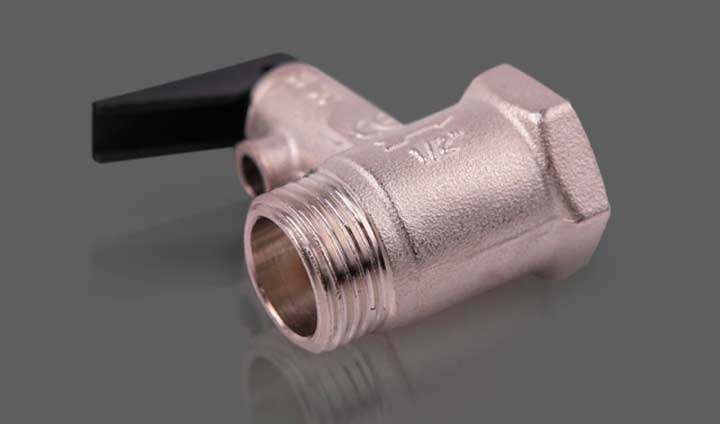
Safety valve.
The safety device monitors the pressure in the system. If the pressure rises above 15 atmospheres, the valve is triggered and begins to bleed the coolant from the heating system. This helps to prevent damage to elements in the system due to possible water hammer. The installation of a tap with an automatic valve is important for heating systems with polypropylene and metal-plastic pipes that are not able to withstand high pressure.
When choosing a specific crane model, it is necessary to take into account such nuances of the radiator as:

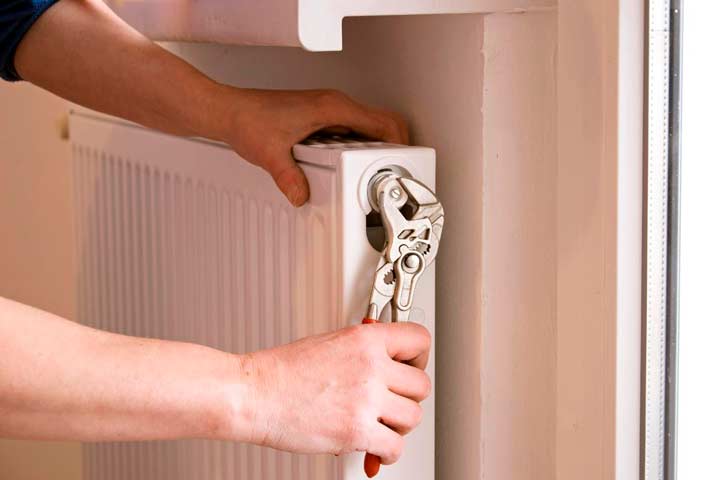
In a centralized heating system, it would be better to use a manual tap, which can be vented at any time.- It is also not advisable to install cranes with automatic control in apartment buildings with centralized heating. Since, there is increased pollution and the tap will be periodically clogged.


An automatic crane is used mainly in individual households with an autonomous system. In such a system, there is a maintenance of the cleanliness of the coolant.- Automation is also installed in places where access is difficult. This is, for example, if the radiator is located in a niche or recess, and it is relatively difficult to reach its end. A regular screwdriver will not help here.
In the case of a hard-to-reach location of the heating device, a special four-sided wrench can help. The old models of cast iron radiators are still used to the full. For cast-iron radiators, a Mayevsky manual crane is suitable. But the best option would be to use a special brass automatic air vent.
When choosing fromThe corrosion resistance of the material must also be taken into account. Many manufacturers use chrome-plated steel for their valves, which have a short lifespan. The best materials for parts are brass and stainless steel.
Design features
The design of the crane is quite simple. It consists of a body with a calibrated thin hole and a cone-head locking screw screwed into it. The housing has a hole for air outlet to the outside.
The outer end of the locking screw can be made in the form:
- slotted head for a screwdriver;
- a four-sided head for a special key;
- wing-type handles for loosening the screw by hand.
Some designs have a separate air collection chamber inside the enclosure with an air outlet.
Outside the body, a standard thread is made for installing the valve in the radiator hole instead of the plug (plug).
To release the air, the plug screw is unscrewed by half a turn (a full turn is possible). This opens the calibration hole, through which air from the radiator first enters the hole in the valve body, and then goes outside.
After complete air removal, the plug screw must be tightened up to the stop.
How to install a Mayevsky crane
The valve is installed on the top of the battery on the opposite side of the coolant intake, because this is the place where air accumulates. It is also worth keeping in mind the subtleties of various systems.
On a note: With a vertical heating system, taps should be installed on the batteries of the upper floors. Also, they must be installed on all heating elements supplied to the riser below the connection axis. And with a horizontal system, the taps are mounted on all radiators, without exception.
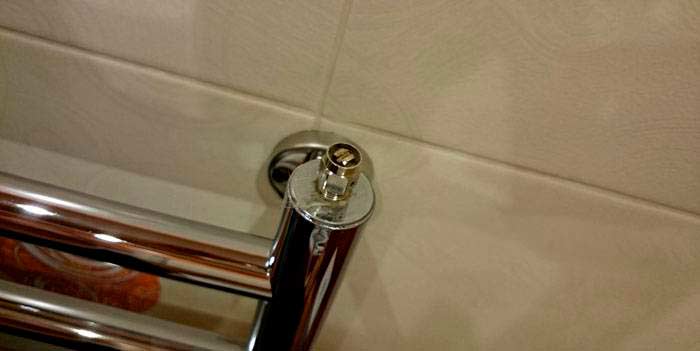

In the case of installing a Mayevsky crane on a battery standing on the floor, it must be placed at the highest point of the radiator. The adjusting screw points up.
As a rule, the bathroom has a heated towel rail, which is heated by the circulating heat carrier inside. Here they install Mayevsky's tap for a heated towel rail.
The absence of this valve in such a system can lead to air locks that stop the circulation of both the heating circuit and the hot water circuit. Therefore, the presence of this tap on heated towel rails will eliminate this problem.


When installing a Mayevsky crane for a heated towel rail, it must be placed strictly vertically using a special tee. The tee will move the working vertical axis to a horizontal position. This provision fulfills the requirements prescribed by the instruction. Namely, the air bleed hole should be directed in the opposite direction from the wall and be sloped downward.
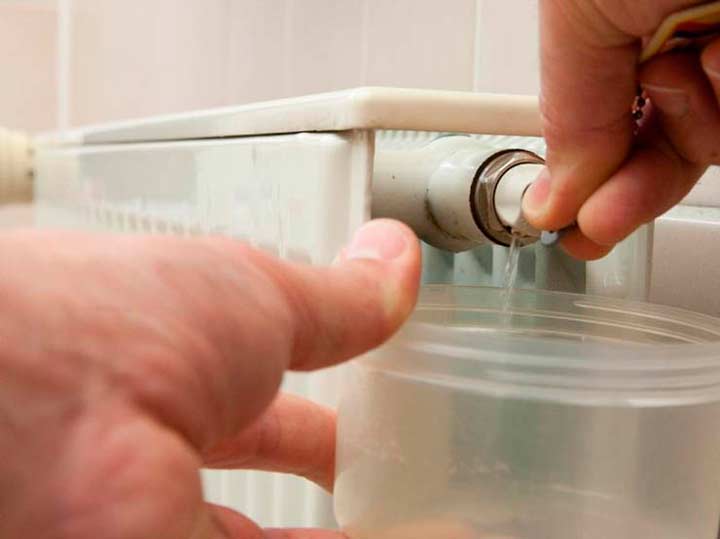

Immediately after the completion of the installation work of the heating system it is necessary to carry out airing... Because in the process of work, air in any case enters the radiators. Also, this event must be carried out including the system after the summer period. After all, air can also accumulate due to the release of hydrogen during the corrosive processes of a metal element. In radiators made of aluminum without a special coating, the release of this element is constantly observed inside and a chemical reaction with the coolant occurs.
Types of cranes: which one is better to choose
The classic version of the Mayevsky crane
This is a manual device. Suitable for any autonomous systems.
The classic version is very popular due to the reliability of the design, ease of use and low cost.
Automatic model
Mayevsky's automatic crane
The automatic version of the Mayevsky crane has a more complex design.
It is made of a metal cylinder that contains a float that is connected to a needle valve at the top of the valve. When air accumulates in the cylinder cavity, the level of the heat-carrying fluid decreases, the float goes down and opens the hole of the needle valve through which air exits.
A decrease in the volume of air in the cylinder leads to an increase in the liquid level, the float rises and closes the outlet of the valve.
It is better to install them in places where air locks often occur and when access to them for manual control is rather difficult.
Such models are very demanding on the quality of the heat-transfer fluid.so you need to check it periodically.
Safety valves
The safety valve protects the system elements from sudden pressure surges.
When the pressure rises above 15 atm. the safety valve is triggered and drains the excess coolant into the sewer.
Taps with safety valves are needed in systems where pressure surges are possible, especially if plastic pipes are installed in the system. The crane will protect itself and other elements of the system from their failure as a result of water hammer.
A temperature regulator for a heating radiator allows you to control both the temperature and the volume of the incoming hot heat carrier, reducing or increasing the degree of heating of the device.Which cast-iron heating batteries are better: choose according to technical parameters, material, manufacturer. Overview of vacuum batteries
Features of operation
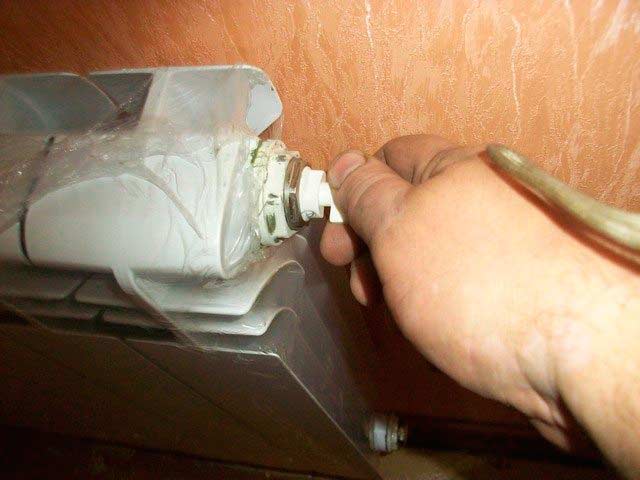

Let's see how to use the Mayevsky crane in work. First, put a container under the radiator and prepare a dry rag. Use a special wrench or a simple screwdriver to turn the locking screw. In this case, you need to turn it counterclockwise and half a turn. Air will start to come out and then water will come out. It is necessary to wait for the moment when the liquid will flow without interruption. Then tighten the screw.
A case where the air has been removed and the radiator remains cold indicates a clogged system.
In order to clean a clogged battery, you need to seek help from a plumber.


Note: If the heating system has a pump operating on the principle of forced circulation, then it will need to be turned off 10 minutes before the air lock is released. With the pump on, the water flow will carry air through the system and will not accumulate at the top of the battery.
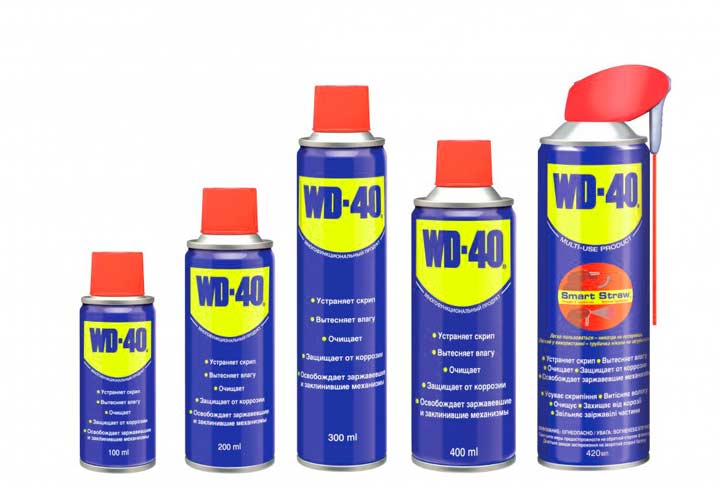

If there is a blockage in the opening of the Mayevsky tap, you can try to clean it yourself with a sharp object. Also, if the valve is not used for a long time, the adjusting screw will be difficult to rotate due to possible corrosion formations. If such a problem occurs, use a tool such as WD-40 spray lubricant. It works very quickly and helps to unscrew the screw easily.
Also, at the end of the heating season, grease the screw. In this case, there will be no destruction of the thread under the influence of the coolant.
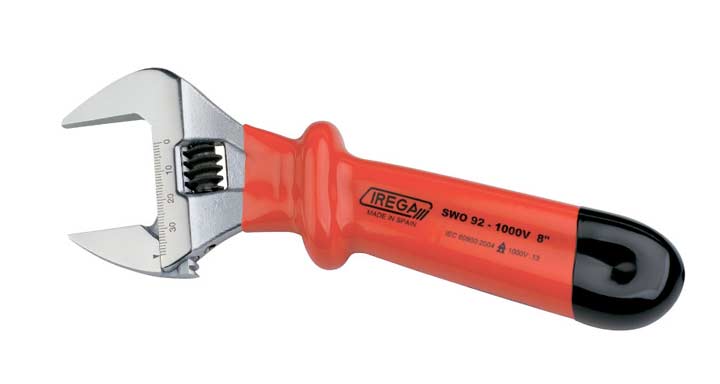

If it becomes necessary to replace the Mayevsky crane, you need to use two adjustable wrenches. One key holds the radiator cap, and the other unscrews the tap. If this is not observed, then when unscrewing the valve, the plug may loosen, which will lead to leakage.
If you monitor this device, do routine diagnostics and cleaning, it will last a long time without any problems.
The technology of installing a Mayevsky crane on a cast iron radiator
The installation of any model of the Mayevsky crane begins with the release of the system from the coolant. After all the water is drained from the system, work is done in the following order:
- It is necessary to unscrew the plug located at the top of the battery compartment.
- Install a tap instead. When screwing in the model, care must be taken to seal the hole. For this purpose, the device has a rubber gasket to ensure the tightness of the installation. To enhance the sealing, flax fibers impregnated with oil or FUM tape are wound on the tap thread.
If necessary, install a Mayevsky crane on an old cast iron battery, in which the upper plug is fixed tightly, that is, it cannot be unscrewed, it is necessary to prepare a place for installing the device. To do this, a hole must be drilled in the cast iron plug. Its diameter should be slightly smaller than that of the tap thread.
Then, with the help of a tap, a thread is cut in the hole, corresponding to the thread of the valve.After checking the correctness of the threads, you can reinstall the valve. Shouldn't be forgotten on the mandatory sealing of the screw-in place of the device.
It happens that arises the need to replace the Mayevsky crane... Two adjustable wrenches must be used to remove the old device. One of them unscrews the tap, and the second at this time must hold the plug on the radiator. This is necessary so that at the moment of unscrewing the tap, the plug does not loosen, breaking the tightness of the battery.
Mayevsky crane price
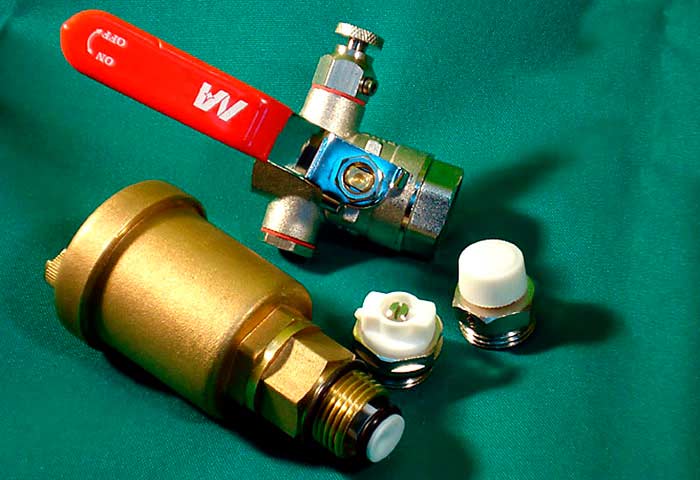

Now the plumbing market presents many types of Mayevsky faucets. There are domestic and foreign manufacturers, and various materials and components are used.
There are both metal and plastic taps for every taste.
The price will depend on indicators such as:
- a type;
- material;
- diameter.
The cost of the crane starts at thirty rubles.
Application of the Mayevsky crane for cast iron radiators
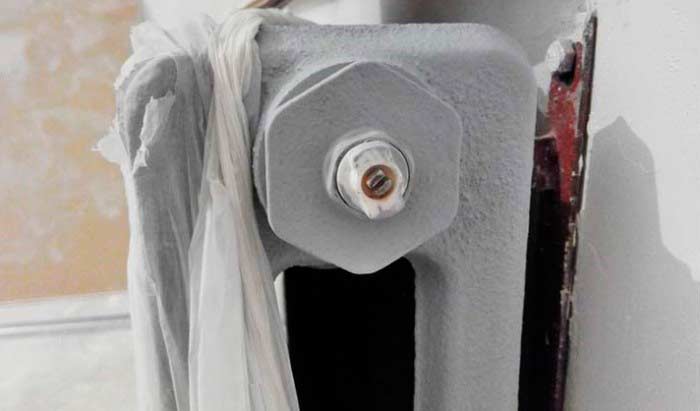

In a cast-iron radiator, there is no bore for a standard valve in the plug-plug. There are craftsmen who are trying to install a valve to remove an airlock by drilling and tapping on a cast iron plug. But this structure can be disrupted by such a phenomenon as water hammer when pressure rises. The way out of this situation is to install an automatic air vent that matches the size of the cast-iron radiator plug. And also they are not afraid of blockage.
If there are solid particles of various debris in the coolant, then a mechanical standard filter must be installed directly in front of the tap to drain water.
How to choose
When choosing a crane model, consider the features of the radiator:
- in centralized heating, the coolant contains impurities that clog automatic models.
Valves with manual air release - the most optimal option for apartment buildings; - automatic tapsinstalled in autonomous heating operate in a clean water environment. This determines their use in a private house.
The second reason for installing such products is the inaccessibility of the place where the crane needs to be installed; - all three types of valves are installed in cast-iron radiators of the old model.
The radiator material, the type of heating are not an obstacle to the installation of such products.
There are more advantages to using Mayevsky cranes than disadvantages. They look like a presentable vent valve.
There is no risk of flooding the neighbors. Maintenance and installation is easier, which will save on heating, due to better heating of the radiators.
Mayevsky crane in pneumatic systems
The technical feature of the Mayevsky crane is the uniqueness of the design.
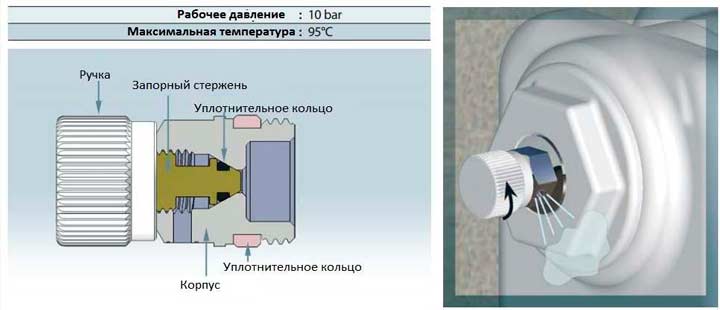

It can be used not only to remove air, but also liquid. Namely, fluid from a pneumatic system in which there is increased air pressure. The entry of compressed air from the compressor into the system is accompanied by a large amount of water vapor. Special freezing devices and various filters take away excess moisture. Large amounts of liquid can accumulate in the pipes during long-term operation. It accumulates in the lower area of the pneumatic lines, and is also sprayed throughout the system. Water must not come into contact with the working pneumatic device. This is where Mayevsky's crane turns out to be the salvation. Only in this situation is it mounted in the lower part of the circuit. The bleeding process begins with getting rid of the water and ends with the release of air. Then the tap is closed and the system is again sealed.

